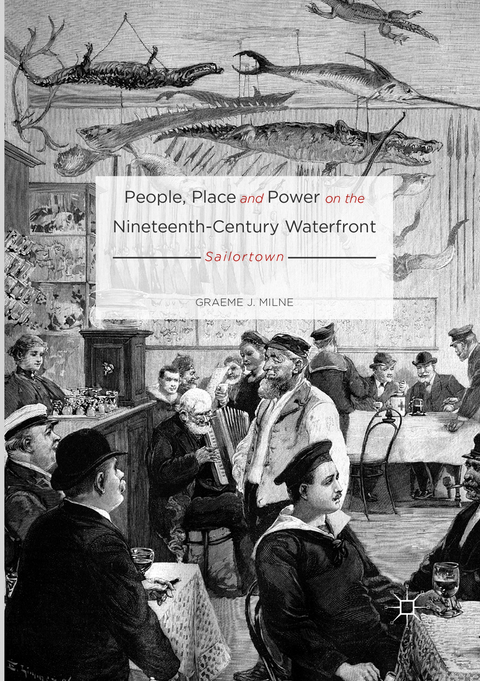
People, Place and Power on the Nineteenth-Century Waterfront
Springer International Publishing (Verlag)
978-3-319-81442-1 (ISBN)
Graeme J. Milne is Senior Lecturer in Modern History at the University of Liverpool, UK. He works on urban, maritime and economic history, and is the author of North East England, 1850-1914 (2006) and Trade and Traders in mid-Victorian Liverpool (2000).
1. Introduction. - i. Literatures, entanglements and spaces. - ii. Voices. - iii. Sailortowns in time and space: A brief tour. - 2. The seafarer in the age of sail. - i. Representing the seafarer. - ii. Mobility, identity and markets. - iii. Working in a peculiar industry. - iv. Choices. - 3. The maritime-urban frontier. - i. Sailortown and the Victorian urban crisis. - ii. Sailortown and the cosmopolitan port city. - iii. Sailortown's streets. - iv. Spaces of enticement. - v. Threats and dangers. - vi. Imagined places. - 4. Crimps and crimping. - i. The mythic crimp. - iii. Controlling spaces. - iv. Depredations. - v. Crimps and market power. - 5. Visions of home. - i. Family lives. - ii. The seamen's boarding-house. - iii. Sailors' Homes. - iv. Missions to seamen. - v. Institutional landscapes. - 6. The state in sailortown. - i. The war on desertion. - ii. Regulating the spaces of crimping. - iii. 'Government crimping'. - iv. Documents, identities and the global subaltern. - v.Public health and sailortown's sexual entanglements. - 7. Legacies: Sailortown in the twentieth century. - i. Race and place on the waterfront. - ii. War, Depression, and the welfare of seafarers. - Conclusion. - Sources and Bibliography
"This book provides the reader with a thorough, detailed and nuanced understanding of sailortown during the nineteenth century. ... Milne's book shines a light on a much under-researched area that has fallen between the historical sub-themes of maritime and urban history. ... Milne has produced a book which will undoubtedly become an important contribution to both urban and maritime history." (Brad Beaven, The International Journal of Maritime History, Vol. 29 (3), August, 2017)
| Erscheinungsdatum | 05.03.2022 |
|---|---|
| Zusatzinfo | XI, 266 p. 1 illus. in color. |
| Verlagsort | Cham |
| Sprache | englisch |
| Maße | 148 x 210 mm |
| Gewicht | 369 g |
| Themenwelt | Geisteswissenschaften ► Geschichte ► Allgemeines / Lexika |
| Geisteswissenschaften ► Geschichte ► Allgemeine Geschichte | |
| Geschichte ► Teilgebiete der Geschichte ► Kulturgeschichte | |
| Schlagworte | Frontier History • Maritime History • Nautical History • Port Culture • seafaring |
| ISBN-10 | 3-319-81442-7 / 3319814427 |
| ISBN-13 | 978-3-319-81442-1 / 9783319814421 |
| Zustand | Neuware |
| Haben Sie eine Frage zum Produkt? |
aus dem Bereich


